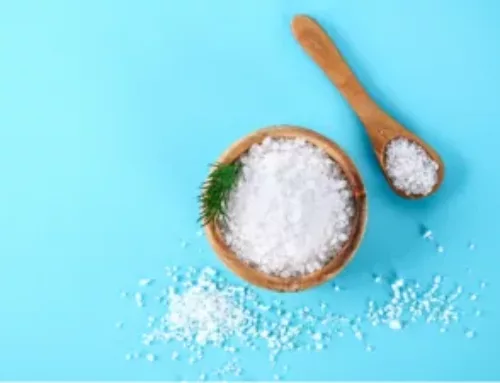Which matters more: the nutrition facts label, the ingredients list or the health claims listed on the product label? Here’s what you need to know about how to read and evaluate product labeling before you buy.
Product labeling can be misleading, especially with phrases like:
- Fat-Free!
- Sugar-Free!
- Low-Carb!
- All Natural!
- Organic!
- Prevents Heart Disease!
But just because a product claims to be healthy doesn’t mean that it actually is healthy. How can you know that the products you choose are, indeed, healthy choices? Start by learning how to read the label.
Nutrition Facts vs. Ingredients: What’s more important?
Contrary to popular opinion, the most important part of any product label is the ingredients list. Ignore all the marketing jargon, and ignore the Nutrition Facts label for now, and start by reading the ingredients list. Why? Because it tells you what you’re actually eating.
By law, all packaged food products must disclose their ingredients and list them in descending order by the weight of each item. For example, in a carton of cottage cheese (figure 1), the first ingredient listed is milk because there is more milk in the product than anything else. Vitamin A palmitate is listed last because there is less of it than anything else.
Figure 1
As a general rule, if the ingredients list is more than a few lines long or you can’t pronounce or identify an ingredient, you probably shouldn’t consume it. (Figure 2 is an example of something you probably shouldn’t eat). The only exception here would be the technical names of vitamins and minerals, such as vitamin A palmitate, riboflavin and calcium lactate. If you’re unsure of an ingredient, Google it!
Figure 2
While companies are legally obligated to list the ingredients in their products, they don’t have to tell you where those ingredients come from or whether or not they are naturally occurring food sources. That’s why product labeling, including health claims, can be misleading.
Some toxic ingredients to avoid during your SHAPE Program journey and beyond:
- Added Sugar — Although not all sugar and sugar-based sweeteners are toxic, they all need to be avoided during Phase I and Phase II. For a complete list of names for sugar, read this article: Sugar’s Identity Crisis: 72 Names for Sugar
- Artificial Colors — FD&C Red No. 40, Blue No. 1, Yellow No. 5, carmine extract, tartrazine, lake pigments, etc.
- Artificial Preservatives — Benzoates, sulfates, sulfites, nitrates, nitrites, sorbates, calcium propionate, BHT, BHA, Disodium EDTA, etc. For a more complete list of preservatives, read this article: The Problem with Preservatives
- Artificial Sweeteners — Aspartame (under brand names like Equal, Nutrasweet or Aminosweet), saccharin (Sweet’n’Low), sucralose (Splenda) and acesulfame potassium (Sunett or Sweet One). For more information on artificial sweeteners, read this article: Popular Artificial Sweeteners Are Not SHAPE-Approved
- Hydrogenated Oil — Often listed as partially- or fully-hydrogenated vegetable oil or shortening, this ingredient is listed on the Nutrition Facts as “Trans Fat.” Learn more about this form of fat in this article: All About Dietary Fat
- Monosodium Glutamate — Also known as MSG and often listed under pseudonyms like autolyzed yeast extract, hydrolyzed vegetable protein, calcium caseinate, and many more.
Decoding Nutrition Facts
A product’s nutrition facts are required by law to be printed on all packaged food labels. As of January 1, 2020, the FDA requires food product labels to be more transparent about the actual nutritional value of the food.
Here’s how to understand the Nutrition Facts label on a packaged food with some highlights on some of the major label changes (see figure 3).
Figure 3 – from fda.gov
Servings Per Container and Serving Size
The new labels now have serving sizes that more accurately reflect what a person actually eats. Additionally, for products that are larger than a single serving, but could be consumed in a single sitting (i.e., a pint of ice cream), manufacturers now have to provide two columns: “per serving” and “per package.”
Calories
A calorie is a unit of energy. All foods contain stored energy. When you consume food, you are essentially consuming energy that your body uses to function. All macronutrients contain calories, but 1 gram of fat contains more energy or calories than 1 gram of protein or 1 gram of carbohydrate. Thus, fat provides more energy.
The SHAPE Program is less concerned about number of calories being consumed in a day than it is about the quality of calories. Calories from whole, nutrient-dense foods are most important.
% Daily Value
Each additional item on the Nutrition Facts label is listed in grams (a unit for weight) and in % Daily Values. The % Daily Value is usually explained at the bottom of the Nutrition Facts label, but that information isn’t accurate for everyone. Your sex, age, body size, level of activity and general health all need to be factored in to determine your individual daily needs.
Total Fat
One of the main reasons why it’s so important to focus on the ingredients list is that the Nutrition Facts label can be misleading. Look at the ingredients in figure 4. Notice the word “hydrogenated” is listed twice. Hydrogenated oils are highly toxic and a source of trans fat. Now check the Nutrition Facts label. It says there are 0g of trans fat. How is it possible that a product containing hydrogenated oils is free of trans fat? If the amount per serving is less than 0.5g, legally the manufacturer can say 0g on the label. (While this is an old label, the requirements for Total Fat have remained the same with the new labeling laws.)
Figure 4
We go into greater depth on fats in this article: All About Dietary Fat
Cholesterol and Sodium
Cholesterol and sodium can be controversial. Some dietary cholesterol is necessary, such as that found in egg yolks and organic butter. Some sodium is also necessary, which is why we recommend using Celtic Sea Salt. These values on product labeling don’t need much attention when you’re on the SHAPE Program and beyond if you follow the guidelines for avoiding toxins and stay away from highly processed foods.
Total Carbohydrates
On a Nutrition Facts label, Total Carbohydrates gives the total number of grams of carbohydrates which are broken down into Dietary Fiber, Total Sugars and Added Sugars.
In figure 5, (Bob’s Red Mill Whole Flaxseed), Total Carbs are 4g per serving and Dietary Fiber is 3g. When you subtract Dietary Fiber from Total Carbs, you get a value known as net carbs — in this case, 1g. The lower this number, the better, especially if you’re dealing with blood sugar imbalances or working on releasing excess weight. Flaxseed is an excellent source of healthy carbohydrates, fiber, omega-3 fatty acids and other phytonutrients.
We go into greater depth on carbohydrates in this article: All About Dietary Carbohydrates
Figure 5
Under the new labeling law, manufacturers must disclose Added Sugars. This is a wonderful change. While the ingredients list is still the most important place for detecting added sugar in a food product, you can now check the Nutrition Facts for confirmation about whether a food has added sugar. Some naturally occurring sugar (like lactose in cottage cheese and yogurt or the sugar in whole fruits and some vegetables) is fine while on the SHAPE Program, but added sugar is a big NO. Thanks to these new labeling laws, this will be even easier to detect.
For more information about added sugar, read this article: Sugar’s Identity Crisis: 72 Names for Sugar
Protein
This value can be helpful when learning about the macronutrient profiles in different foods. Flaxseeds, for instance, are known for their healthy fat and fiber content. However, based on the label in figure 5, they are actually a relatively good source of plant-based protein. If you struggle with blood sugar issues, it can be helpful to note the amount of protein and net carbs in a certain food. The closer in value these numbers are, the better chance that food will keep your blood sugar stable.
We go into greater depth about dietary protein in this article: All About Dietary Protein
Vitamins and Minerals
These values are not always significant as long as you are consuming real, whole foods such as those found in the Nutrition Protocol of the SHAPE Program. By following the protocol and your SHAPE practitioner’s recommendations, you should be getting a healthy balance of vitamins and minerals.
How to Read Product Labeling:
- Find the ingredients list. Observe how many words or lines it contains.
- Read through the list and ask yourself: Are there any toxic ingredients? Can I picture each ingredient in my mind? Can I pronounce each word?
- Evaluate your answers to these questions.
- Look up any unknown ingredients.
- Decide if the product is healthy and/or SHAPE-approved. If it is, buy it. If not, walk away. When in doubt, leave it out.
The more you practice these steps, the easier it will be to understand product labeling. Give yourself some extra time for your first few shopping trips, and eventually, you’ll find that toxic ingredients start to get your attention, much like a warning siren or a flashing light would. Your success on the SHAPE Program and beyond depends on you learning how to read product labeling so you can make educated choices.











